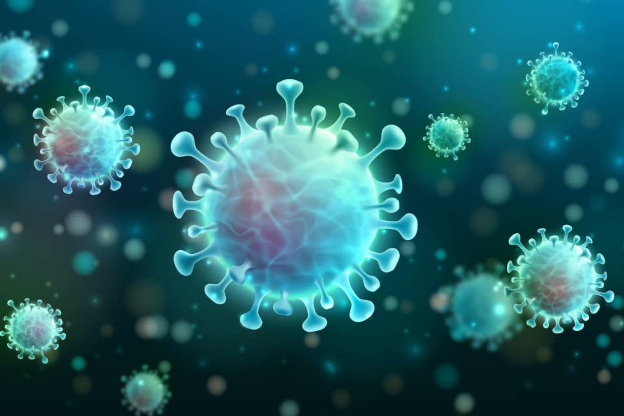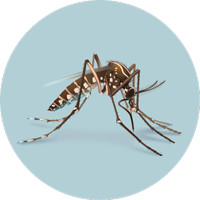End Times Pestilence
Meaning of Pestilence in the Bible
Revelation Pestilence Bible Verse
Welcome to our Christianity Oasis End Times awesome adventure bestowing upon you hundreds of interesting, intriguing, intense and sometimes insane End Times Studies to enLIGHTen the path ahead as to avoid potential pitfalls.
In order to expand on your preparation for living the Christian life no matter what the era, we also offer our Christian Walk Studies which were put together to uplift and encourage the soul as well as bring a smile to the lips and heart.
This particular End Times study is our fascinating, fearful and frightening Bible Pestilence prophecy trek for truth concerning the meaning of pestilence in the Bible which our Lord warned us about in the End Times pestilence prophecy written about in the Revelation Pestilence passage which reveals how the Revelation pestilence Bible verse warning sign affects Christians and non-believers today more than ever.
The extremely essential and eyebrow lifting message within this Pestilence Bible study will truly enLIGHTen your YOU-nique Christian path in a world which is becoming increasingly dark. We are told to watch for the End Times signs and Pestilence is one of these signs. Why are we to watch for the Revelation pestilence Bible sign? Let's find out, shall we?
End Times Pestilence Journey
Revelation Pestilence Bible Verse Woe
In a span of less than 25 years, the United States alone (not to mention the world) has been stricken by a wave of pestilence and new infections. Over the last century ... Horrible plagues such as Toxic shock syndrome, Legionnaires disease, AIDS, Lyme disease, bird flu, Ebola and hanta virus (just to name a few) have emerged from obscurity to become household names. There are now becoming more and more diseases from the food supply as well. And now ... Introducing Covid. This latest disease has killed a massive amount of people and continues to do so. It also disrupted the world's agenda and encaged people within their homes and even within themselves.
The Pestilence Scriptures predict that pestilence will continue to intensify. Infectious disease experts fear a massive escalation of new and possibly even more deadly epidemics in the future. Bible Pestilence prophecy agrees wholeheartedly. In fact, some candidates for the final pestilence already loom on the horizons, isolated in various geographical areas and can spread like wildfires (Which also are predicted in the End Times). Why this sudden explosion of pestilence? The Pestilence in the Bible warning is clear. Get prepared.
Throughout the End Times Pestilence prophecy, we see that part of Gods punishments upon mankind for mankind's sins is ... Pestilence. From the plagues bestowed upon Egypt and Pharaoh before the children of Israel's mass exodus:
Jeremiah 34:17
Therefore thus saith the LORD; Ye have not hearkened unto me, in proclaiming liberty, every one to his brother, and every man to his neighbour: behold, I proclaim a liberty for you, saith the LORD, to the sword, to the pestilence, and to the famine; and I will make you to be removed into all the kingdoms of the earth.
Bible Pestilence Prophecy Cometh
What is the Meaning of Pestilence in the Bible
From what we read in the Olivet Discourse, which is found in the book of Matthew Chapter 24 ... We see many references to death by pestilence and many dying from illness. The Olivet Discourse is where Jesus shares with us a warning of what will occur before, during and after the End Times and His return.
Matthew 24:7
For nation shall rise against nation, and kingdom against kingdom: and there shall be famines, and pestilences and earthquakes, in diverse places.
Another sign of the coming End Times is nation will war against nation, huh? Sound familiar? But, that is not our topic in this End Times pestilence study, but if you continue on the End Times Adventure path with us, you will learn all about the coming End Times. You will have hat option at the end of this Meaning of pestilence in the Bible exploration.
Let's get back to the End Times Pestilence in the Bible expedition ... Could the introduction of the many new incurable diseases such as Covid be a precursor to the beginning of the end and a prelude to the Revelation pestilence Bible warning? Could these new and continual pestilences be verifying the Revelation Pestilence Bible Verse prophecy? We should watch these new and old diseases as to be watchful for the patterns that show an increase in pestilence in our times.
Bible Pestilence Prophecy Confirmed
End Times Pestilence Bible Stats
Below is a listing of disease outbreaks worldwide just since the year 2016.
The source of this information is the World Health Organization,
Potential End Times Pestilence list.
Bible Pestilence Signs
Pestilence Bible Verse Danger
Bible Pestilence Prophecy Summary
True Meaning of Pestilence
It appears that the Revelation pestilence Bible verse prophecy of future diseases were true. Now, we have Covid in our midst for years. If you are not familiar with this disease (Though it is a very known and infamous disease now) just watch the news and you will know the danger of this monster. Around 7 million deaths from this dangerous form of pestilence, as of November 2022 and millions more I am guessing, by the time you are here reading this Pestilence Bible study.
Not counting the 625 million who suffered through a miserable sickness with the pestilence and lived. It is a horrific disease. Its origin is truly unknown though there are many theories. Despite its true origin, it is still with us and there are more to come which will be even worse. Take precautions against it and all diseases. Be watchful.
What is the meaning of pestilence in the Bible? In short, the Bible pestilence voyage we have been a part of today reveals the fearful and frightening truth that there have been many diseases in the past and these horrifying pestilences just keep on coming. The End Times pestilence warning says that these pestilences will continue to grow in frequency, intensity and danger. Now you know the answer to the question, what is the meaning of pestilence in the Bible. The Revelation Pestilence concern is just one of the horrific End Times events on the horizon. In fact, it pales in comparison to what else is on the way.
Pssssssst ... Don't Be Scared.
Be Prepared.
Copyright © 2000-2025 All rights reserved.
To learn all about the End Times:
Go to the End Times Home Page:

Living Water at Christianity Oasis
John 7:38 He that believeth on me, as the scripture hath said,
out of his belly shall flow rivers of living water.

Learn how the Christianity Oasis Ministry was created by the Hand of the Lord. A true story of unconditional Love, Mercy and God's glorious Grace.
The Meaning of Pestilence in the Bible Sites
End Times Pestilence Resources
Bible Study Tools ... 5 Things to Know about Pestilence in the Bible - Pestilence is a deadly disease. This calamity is considered harmful or destructive. It is a consuming sickness and is frequently used by God
Christian Broadcasting Network ... 25 Bible Passages about Plagues and Pestilence - Bible verses about plagues, pestilence, and God's promises for us.
Crosswalk.com ... How Did God Use Pestilence in the Bible? You also see plagues when you turn to the scriptures. God has used pestilence in the Bible primarily as a form of judgment of sin.
Evidence to Believe ... In the last few years, we have endured SARS, the swine flu, ebola, avian flu, MERS, West Nile virus and now the Coronavirus or Covid-19. Let us take a look at the frequency, scale and impact of epidemics and pandemics over the last few centuries.
Holy Spirit ... The End Times Pestilence Bible prophecy is about to be fulfilled. Get to know the Holy Spirit as to be prepared for the Revelation pestilence Bible verse prophecy.
Knowing Jesus ... 19 Bible verses about Pestilence - "The LORD will make the pestilence cling to you until He has consumed you from the land where you are entering to possess it. Jeremiah 24:1-10.
Quora ... What is the meaning of pestilence in the Bible? Pestilence is typically a contagious disease, in the Biblical accounts it is a judgment of God on a particular group of people.
Wikipedia ... Four Horsemen of the Apocalypse - In John's revelation the first horseman rides a white horse, carries a bow, and is given a crown as a figure of conquest, perhaps invoking pestilence.
When you have finished this Bible Pestilence prophecy discussion researching the meaning of pestilence in the Bible found within Scripture and the Revelation pestilence Bible verse, you can also check out some of the other Christian entertainment, games, music, books, mall, studies and programs within our Christian community below:








